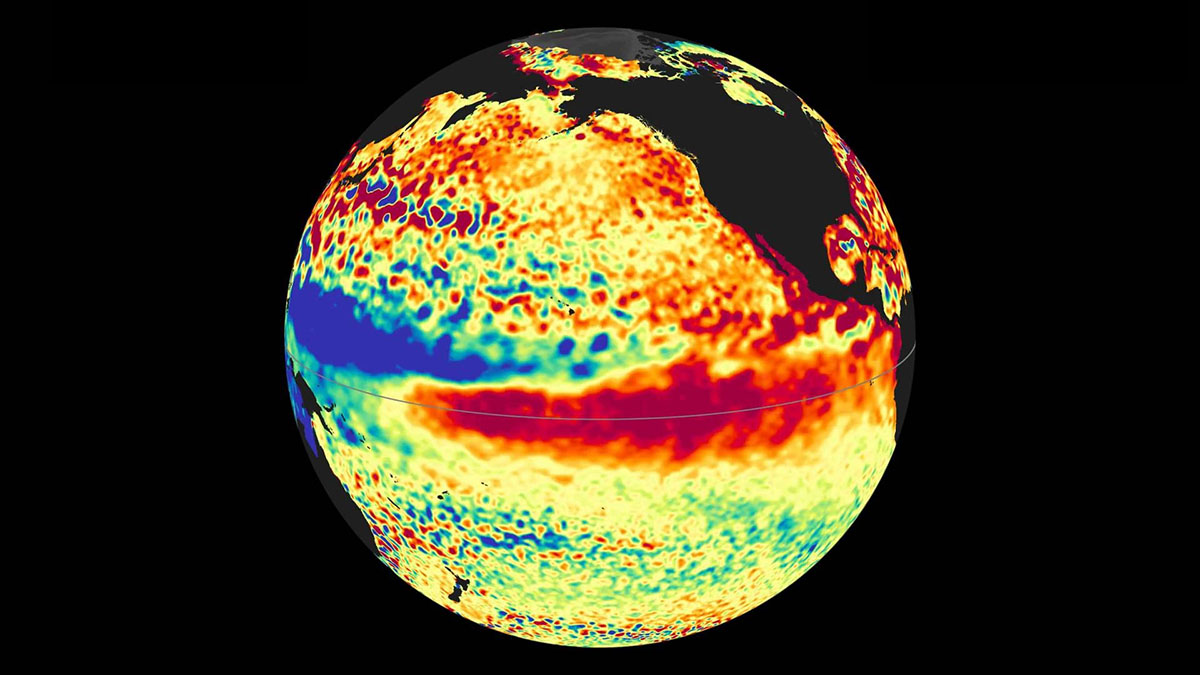when a heat wave is just a heat wave

Not to get too far into this blog’s tech projects right off the bat, let’s pause for a minute and talk about a far less esoteric topic like the weather, because by FSM’s left meatball was it hot last week. Normally, in my little slice of the Midwest, the typical temperatures for the first few weeks of July are in the mid-80s to low 90s. Instead of that we were hit with 100 to 105 degree heat. Global warming at work folks, right? Actually, despite all the high profile media invocations of climate change and pop sci blogs rushing to cite the heat wave as proof of major climate shifts, it’s probably not. Just like the climate change deniers who howled with paroxysms of glee as a bitter cold snap of last year’s winter gripped the Northern Hemisphere, those rushing to portray this heat wave as evidence of global warming are committing the same fallacy; confusing weather and climate.
We can only reliably measure climate change when looking at global average year to year temperature trends and related phenomena such as droughts, retreating glaciers, and the behavior of Arctic ice covers. All those trends show a steadily warming planet, yes, but they have little to do with the blazing heat wave we just experienced. But of course the dialogue over whether a heat wave or a clod snap means that global warming is valid or not seems only to reflect the media’s schizophrenia on the topic. Scientific literature certainly mentions numerous weather anomalies we could expect from global warming but its predictions usually involve decades in terms of time scales. And yes, not all scientific predictions about it have proven to be right, such as predicting exactly how fast a certain glacier will retreat or how sea ice will behave in any given year, but mostly, they’ve been very close to what we actually see.
Summers are lasting longer and getting hotter, arctic ice is getting thinner, and species are changing their migration patterns due to warmer weather across the globe. Unfortunately, careful and often caveat-laden scientific surveys aren’t sexy enough for the media to report so the denialists will see and remember dismissive heckling from their side and apocalyptic hysterics from the other, charging that predictions by “global warmists” failed to materialize when the only place those predictions existed was in the heated rhetoric over what should be a strictly scientific issue. Now, instead of reasoned debate, we have fury, partisan obstinacy, and a steady stream of hate mail and death threats to scientists studying climate.
Here’s the problem folks. When science blogs are drowning in the enraged rhetoric of denialists who claim to be protecting Americans from a communist plot or a New World Order conspiracy, or pronounce that they’re scientists and know that climatology is just computational bullshit because their unmentioned doctorates in a discipline they won’t disclose gives them expert insight, fighting back with scientifically inaccurate information doesn’t help matters. When you say that it’s miserably hot outside because of global warming, they’ll ask why a bitterly cold winter isn’t proof of global cooling and say you’re cherry-picking facts, and they’ll be right. If you’re going to defend science, you have to stick with the science.
Are facts going to sway any ardent denialists? No, of course not, because they have their own, personal set of facts that corresponds to their personal ideology, and they often launch into their tirades after skimming a few key words of an article rather than find out what it actually says or how it views proposed solutions for coping with climate change. But when those who read the exchanges on the sidelines see one side sticking to the data and the other erupting with pseudoscience and partisan hyperbole, they may be swayed to pay more attention to the facts of the matter. And again, we have to ensure that our facts are right, which is why we need to doubt studies which try to predict how we will affect ice ages in 25,000 years and resist declaring heat waves proof of global warming.





